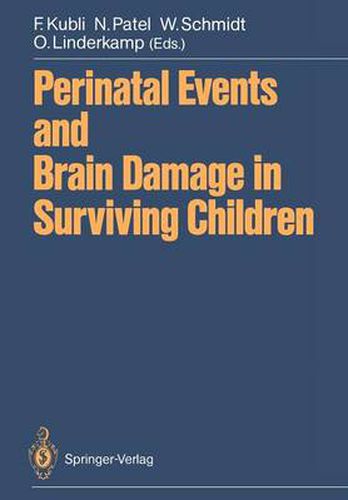Readings Newsletter
Become a Readings Member to make your shopping experience even easier.
Sign in or sign up for free!
You’re not far away from qualifying for FREE standard shipping within Australia
You’ve qualified for FREE standard shipping within Australia
The cart is loading…






This title is printed to order. This book may have been self-published. If so, we cannot guarantee the quality of the content. In the main most books will have gone through the editing process however some may not. We therefore suggest that you be aware of this before ordering this book. If in doubt check either the author or publisher’s details as we are unable to accept any returns unless they are faulty. Please contact us if you have any questions.
Decision making in modem obstetrics and perinatology is con trolled by a variety of different factors, but there is little doubt that in industrialized countries one of the most powerful single factors is the concern and fear of causing permanent brain damage in the unborn and newborn. The dramatic increase in the rates of abdom inal deliveries in many parts of the world is certainly rooted to a substantial part in the ~bstetrician’s concern not so much about possible perinatal death, but more so about permanent brain dam age in surviving children. This trend has been accelerated by the increasing number of litigations in connection with brain damage observed in many societies. This problem itself has many aspects, but it seems evident that litigation - justified or unjustified - is one modem expression of the human and social tragedy inflicted on individuals and families by the birth of a brain-damaged child. The medical, social, and human importance of the problem is in sharp contrast to the relative lack of scientific knowledge avail able. This became very clear when the National Institutes of Health published the excellent review in 1985 on Prenatal and Perinatal Factors Associated with Brain Disorders and its editor, J. M.
$9.00 standard shipping within Australia
FREE standard shipping within Australia for orders over $100.00
Express & International shipping calculated at checkout
This title is printed to order. This book may have been self-published. If so, we cannot guarantee the quality of the content. In the main most books will have gone through the editing process however some may not. We therefore suggest that you be aware of this before ordering this book. If in doubt check either the author or publisher’s details as we are unable to accept any returns unless they are faulty. Please contact us if you have any questions.
Decision making in modem obstetrics and perinatology is con trolled by a variety of different factors, but there is little doubt that in industrialized countries one of the most powerful single factors is the concern and fear of causing permanent brain damage in the unborn and newborn. The dramatic increase in the rates of abdom inal deliveries in many parts of the world is certainly rooted to a substantial part in the ~bstetrician’s concern not so much about possible perinatal death, but more so about permanent brain dam age in surviving children. This trend has been accelerated by the increasing number of litigations in connection with brain damage observed in many societies. This problem itself has many aspects, but it seems evident that litigation - justified or unjustified - is one modem expression of the human and social tragedy inflicted on individuals and families by the birth of a brain-damaged child. The medical, social, and human importance of the problem is in sharp contrast to the relative lack of scientific knowledge avail able. This became very clear when the National Institutes of Health published the excellent review in 1985 on Prenatal and Perinatal Factors Associated with Brain Disorders and its editor, J. M.